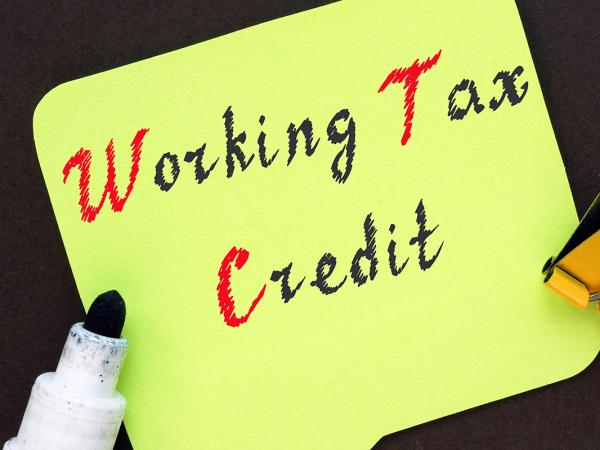Disability and tax credits
Tax credit awards are made up of different elements, including elements that provide additional financial support for people with disabilities or long-term health problems. This page explains the disability element and the severe disability element of working tax credit. There are separate elements of child tax credit for children with disabilities or long-term health problems.

Content on this page:
The disability elements of working tax credit
There are two elements of working tax credit that provide additional financial support and are important for people with disabilities or long-term health problems. These are called the disability element and the severe disability element. You can get both elements, depending on your circumstances. The disability element is for people who are working, and the severe disability element is for people who are either working or, if they are part of a joint claim, who are not working but their partner is working.
Qualifying for the disability element
To have the disability element included in your working tax credit award, you must meet all three conditions for each day of the award. If you are part of a couple, and you both individually meet all three conditions, you should have two disability elements included in your award.
Condition 1: the claimant must work at least 16 hours a week
If you are part of a couple, the partner who meets conditions 2 and 3 (the person with the disability) must normally work at least 16 hours a week.
The disability element is only included for claimants who are working. This means that if you are part of a couple and the non-disabled partner is the worker, then you cannot get the disability element but you may qualify for the severe disability element (see below).
Condition 2: the claimant’s disability puts them at a disadvantage in getting a job
You must have one of a number of disabilities listed in HMRC’s TC956 checklist.
Condition 3: the claimant must be on (or have previously received) a qualifying benefit
The list of qualifying benefits is on HMRC’s TC956 checklist. Again, you only need to be getting (or previously in receipt of) one of these. If you are not sure if you meet this qualifying benefits test, you should get advice. You may end up being overpaid if you get this wrong.
Claiming the disability element
If you are already getting tax credits, but think you might now qualify for any disability-related elements, you should contact HMRC as soon as you are awarded your qualifying disability benefit.
As long as you tell HMRC within one month of the date your disability benefit claim was decided, your claim for the working tax credit disability element should be backdated to the start date of your disability benefit claim. There is some information about this on our backdating page.
If your qualifying disability benefit has been in payment for some time but you haven’t told HMRC about it, the disability element can still be added to your claim once you notify HMRC but the start date of the disability element may only be backdated for one month rather than the back to the start date of the qualifying benefit.
The TC956 checklist needs to be read carefully; all three conditions must apply.
Qualifying for the severe disability element of working tax credit
The severe disability element is an extra element included in a working tax credit award where certain conditions are met. The severe disability element can be included even if you do not qualify for the disability element.
To have the severe disability element included in your WTC award, you (or your partner) must be getting:
- the highest rate of disability living allowance (DLA) care component, or
- the enhanced rate daily living component of personal independence payment (PIP), or
- higher rate attendance allowance (AA), or
- armed forces independence payment (AFIP), or
- the enhanced rate daily living component of Adult Disability Payment under Scottish disability assistance, or
- have reached state pension age and receive the higher rate of Scottish disability assistance.
If payment of these benefits is suspended while you are in hospital, you will still qualify for the severe disability element.
For couples where both claimants meet these conditions, two severe disability elements should be included in the award.
There are various rates of DLA and PIP. It is only the highest rates for care or daily living that count for the severe disability element. Anyone not sure which level of DLA, PIP, or AA they are getting should check with the department paying their benefit.
Claiming the severe disability element
If you are already getting tax credits, but think you might now qualify for the severe disability element, you should contact HMRC as soon as you are awarded your qualifying disability benefit.
As long as you tell HMRC within one month of the date your disability benefit claim was decided, your claim for the severe disability element should be backdated to the start date of your disability benefit claim. There is some information about this on our backdating page.
If your qualifying disability benefit has been in payment for some time but you haven’t told HMRC about it, the severe disability element can still be added to your claim once you notify HMRC but the start date of the severe disability element may only be backdated for one month rather than the back to the start date of the qualifying benefit.



